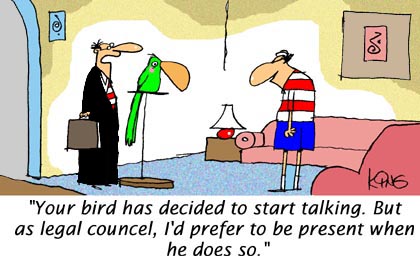Welcome Guest!
These
are short descriptions of the topics -
Actual ELessons are about 1 page
in length.
Enroll to view
additional content.
Prevent common dog behavior problems
Learn and implement practical, proven
methods on how to raise
a puppy into the dog of your
dreams and you will also prevent
the most common behavior problems.
Learning how to modify YOUR behavior so
that the dog modifies his or her
behavior is not only a great
investment of your time, it is a fun and
rewarding experience.
dog of your
dreams and you will also prevent
the most common behavior problems.
Learning how to modify YOUR behavior so
that the dog modifies his or her
behavior is not only a great
investment of your time, it is a fun and
rewarding experience.
AnimalBehavior.Net
(ABN) behavior education is
drawn from experienced veterinarians,
top animal
behaviorists, trainers, and the
personal experience of the Dr. Rolan and
Susan Tripp from over 20 years of
experience, regularly attending seminars,
reading journals, books,
and having discussions based on
concepts recognized by leaders in the
field.
Why not give your pet your best?
Isn't a better life for you and your pet worth a
little time and effort? Follow
the steps below and you will be well on your way to
becoming a Positive Dog Parent.
1. Make
a commitment now to walk your dog (on-leash) off
your property daily. Your dog needs the mental and
physical stimulation. Dogs tend to be less
hyperactive if you establish a daily routine.
2. Take a few minutes before feeding
each meal to practice the words - commands are out,
building your dogs vocabulary is in. One of
the best times to train your dog is after a walk and
before a meal.
3. Dogs need
something to do. Give your dog the job of learning
behaviors from you such as sit, down, wait, stay,
inside, outside, come, roll-over, etc. Their
paychecks become receiving your attention, meals,
playtime, toys, walks, and anything else they value.
If you give these things for free, they lose their
value and your dog will lose its motivation to earn
them. A dog without anything to do does not have
healthy outlets for normal behavior, and is most
likely bored, stressed, and unhappy.
|
Make training a game for
both of you. Learn and have
fun!
Keep
sessions short and
successful. This is quality
time! |
4. Establish
hand signals that are consistent with the words you
are teaching. Be aware of your body and the movement
of your hands. Dogs learn faster from watching your
body language than from your words. Remember they
are canines and we are humans. It's not easy for
your dog to learn a foreign language. Always use one
word to mean one thing.
.jpg) 5. Never lose
your temper with your dog. Anger only makes you look
unpredictable, maybe even dangerous to the dog,
raising the dog's stress and lowering his ability to
learn from you. So often, we think the dog
understands why we are mad when in reality the dog
is VERY confused by our behavior and not learning
what we are trying to teach.
5. Never lose
your temper with your dog. Anger only makes you look
unpredictable, maybe even dangerous to the dog,
raising the dog's stress and lowering his ability to
learn from you. So often, we think the dog
understands why we are mad when in reality the dog
is VERY confused by our behavior and not learning
what we are trying to teach.
6. It's simple math.
Dogs repeat behaviors that are rewarded. A positive
consequence is what teaches the dog what you want.
Be creative. Make it in your pet's best interest to
do what you want by associating learning with
getting what he or she wants from you. Make training
a game for both of you. Learn and have fun!
7. Be deliberate in
your actions with your dog. Provide for your
canine's daily basic needs of training, exercise,
companionship, play, food, water, shelter and you will see great results
besides feeling loved and appreciated for it by one
happy canine!
.jpg) Legal
stuff
Legal
stuff
Please
remember that the written information
contained in Pet Parenting, Positive Dog
Parenting™ and Error-Free Puppy Parenting
Tips™ are all
copyrighted information,
and cannot legally be forwarded
or distributed to others outside
the family at your residence.
You are welcome to discuss any
ideas found here with other
people. Please encourage others
to enroll in Pet Parenting
Courses by Rolan Tripp, DVM and Susan
Tripp, MS, to learn, "How
to become an even better Pet
Parents™."
Improving the Relationships Between Pets and
People
